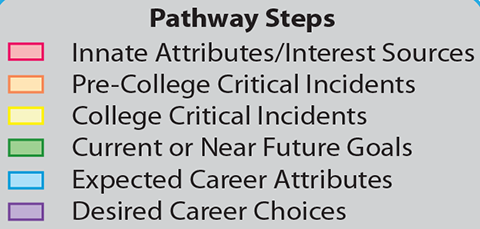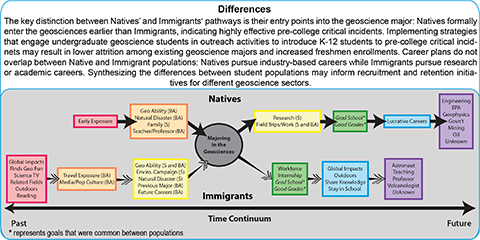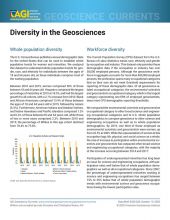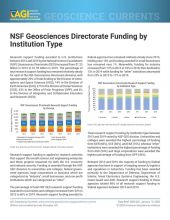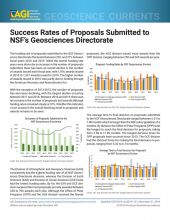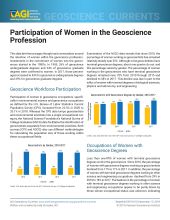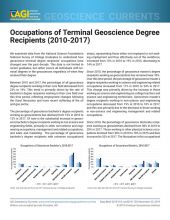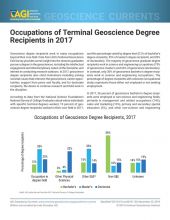Houlton’s pathway model (2010) established a theoretical framework for identifying reasons for attraction to and attrition from the geoscience major. Houlton used Academic Provenance Analysis to map geoscience students’ experiences temporally; it described the linear progression from students’ initial interests through their future ambitions. Geoscience student populations’ pathways for Natives and Immigrants are visually depicted to illuminate similarities and differences in their career trajectories.
Similarities
Interests, critical incidents, goals and career attributes listed within each pathway step are those that span both populations' Academic Provenance Analysis. These overarching components may lead to effective strategies for departments to attract and retain students into the geoscience major. Geoscience courses or labs and influences from a teacher or professor were particularly prominent incidents, demonstrating the importance of academic experiences at the undergraduate level.
Differences
The key distinction between Natives’ and Immigrants‘ pathways is their entry points into the geoscience major: Natives formally enter the geosciences earlier than Immigrants, indicating highly effective pre-college critical incidents. Implementing strategies that engage undergraduate geoscience students in outreach activities to introduce K-12 students to pre-college critical incidnets may result in lower attrition among existing geoscience majors and increased freshmen enrollments. Career plans do not overlap between Native and Immigrant populations: Natives pursue industry-based careers while Immigrants pursue research or academic careers. Synthesizing the differences between student populations may inform recruitment and retention initiatives for different geoscience sectors.
Similarities and differences in pathways for geoscience student cohorts from Houlton (2010).
To read Houlton’s full study, go to: http://docs.lib.purdue.edu/dissertations/AAI1490660/
View an in-depth discussion of this information in the corresponding Geoscience Currents Discussion Webinar.


